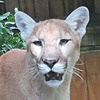HOME | DD
 Sabreleopard — World Lizard Day
Sabreleopard — World Lizard Day

#conservation #frilledlizard #gilamonster #greeniguana #jacksonschameleon #komododragon #lizards #marineiguana #reptiles #thornydevil #worldlizardday #webfootedgecko #lizardday #commontegu
Published: 2020-08-14 04:45:08 +0000 UTC; Views: 1140; Favourites: 7; Downloads: 0
Redirect to original
Description
Just something to celebrate World Lizard Day, the day when we show our appreciation, and bring attention for, and increase knowledge and appreciation for these reptiles with rounded torsos, elevated heads on short necks, four limbs and long tails (even though some, like the slow worm and the glass lizard, are legless) we all know too well and learn how we can help them as they struggle through the changes and threats in their environments. While many people take lizards for granted and think of them as 'generic reptiles,' lizards are quite interesting and very diverse, with different varieties of groups and species. In fact, there are more than 26 families of lizards (including agamas, skinks, anoles, iguanas, monitors, chameleons, and geckos) we share the earth with today. Many lizards species come in all different shapes, sizes, and color/patterns. The largest would be the Komodo Dragon (that reaches to that of a maximum length of 3 metres (10 ft) in rare cases and weighing up to approximately 70 kilograms (150 lb)) and the Smallest would be a tie between the Jaragua dwarf gecko (reaching up to 16–18 mm (0.63–0.71 in)) and the (reaching up to 18 mm (0.71 in) and a maximum body mass of 0.15 g (0.0053 oz)). Lizards are found in every continent around the world, except for Antarctica, most oceanic island chains, and the Arctic. They also belong to the order, Squamata, and are related to snakes and amphisbaenians (worm lizards). Like snakes and amphisbaenians, lizards are ectothermic and are covered overlapping scales. While many species lay eggs, some give live birth. While some are herbivores, most lizards are mainly carnivores and mostly prefer to be sit-and-wait ambush predators. While many smaller species eat insects, the Komodo eats mammals as big as a water buffalo. However, most lizards end up being prey themselves, being caught predators such as birds-or-prey, snakes, carnivorian mammals, and even other lizards. But that doesn't stop them from trying to defend themselves. In fact, lizards, depending on the species, have a variety of antipredator adaptations that would include climbing, running, camouflage, venom, tail autotomy, and reflex bleeding. Some even play dead or have spikes and spines for defense (in the case of the thorny devil and the horned lizard for example). Some even shot blood from their eyes (again, in the case of the horned lizard). However, those wouldn't be enough to for humans and their activities. While most lizard species are common and abundant, some are endangered and in great need of help. The threats they face include loss of habitat, human persecution (some are killed out of fear), and the wildlife trade (many species are over-hunted/over-harvested for their body parts, for food, the pet trade, or for their skins/leather to make belts, boots, and/or purses) With those threats about, they need our help.
But there is hope for lizards as most of them are now being treated as protected species and many conservationists are working hard to protect them. Plus, they even try to educate people into understanding the true nature of venomous lizards which includes the Gila monster, the Mexican beaded lizard, and some monitor lizards, including the Komodo dragon). Many believe they are out to kill (or, in some cases like that of Komodo dragons, eat) people, but that cannot be further more than the truth. While it's true that there were some cases of Komodo dragons attacking and sometimes eating humans and the bites from Gila monsters, Mexican beaded lizards, and monitors hurt and could leave swelling and blood-clotting, those lizards will only bite humans if they feel they have to in order to protect themselves whenever they threatened, and as a last resort, since they prefer to use their venom on their prey. Besides, they produce less venom compared to venomous snakes, so the venom of those lizards are non-fatal to healthy adult humans. As for cases of Komodo dragons, those cases (and any attack on humans by them) are actually very rare, as humans are not a regular prey item for such them. Most Komodo dragons would just move away whenever people appear. Those that do attack are usually atypical individuals that lost their fear of humans or ones that have a hard time catching natural prey and are starving. Scientists also look for Gila monsters and Mexican beaded lizards and harvest their venom to cure cancer and diabetes as it was believed and can be used as medical drugs. Lizards also actually do a lot of good for us by eating a good number of insects (and spiders), keeping certain populations in check. If not for lizards, we'd be having our homes (or even our gardens) be filled with insects running everywhere. Some of them, being herbivorous, can be seed dispensers. They're also important for the food webs in the ecosystem, providing food for other, larger animals as they pick off smaller creatures. They also eat ticks, reducing Lyme Disease. All are more the reasons for lizards to have our respect and appreciation. Here are some things you can do for lizards:
With all that said, Happy World Lizard Day!


























